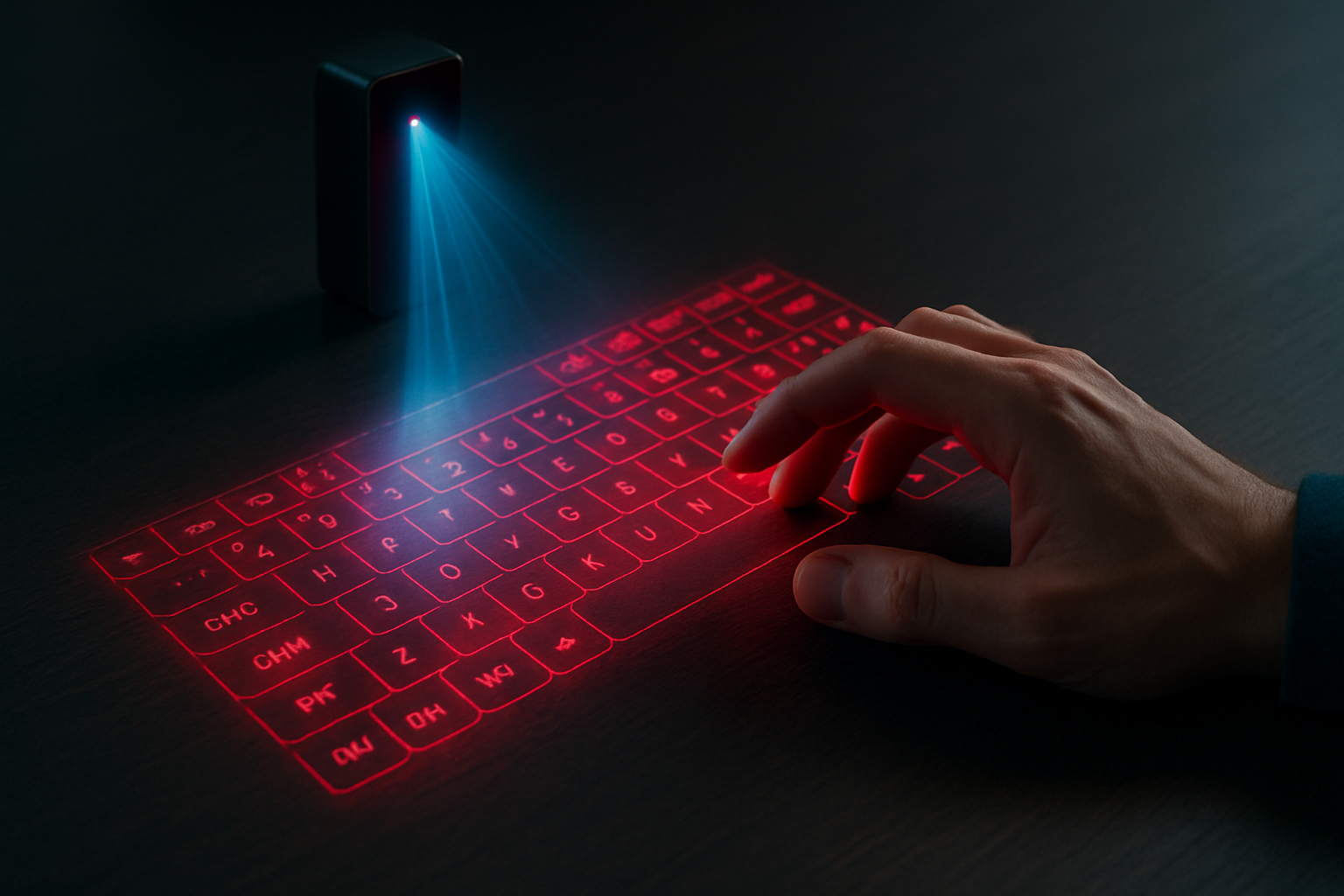Holographic Keyboards: Typing in Thin Air
In a world where technology continues to push boundaries, holographic keyboards are emerging as a futuristic interface that could revolutionize how we interact with our devices. These ghostly, floating input systems promise to blend the tactile familiarity of traditional keyboards with the space-saving magic of projected light. As we stand on the cusp of this innovative leap, let's explore the potential and challenges of typing in thin air.

A Brief History of Virtual Input
The concept of virtual keyboards isn’t entirely new. Early attempts date back to the late 1990s, with rudimentary projections that lacked accuracy and practicality. However, advancements in laser technology, machine learning, and miniaturization have breathed new life into the idea. Companies like Celluon and Serafim have introduced portable holographic keyboard devices, while tech giants like Apple and Google have filed patents hinting at future implementations.
The Promises of Holographic Typing
Holographic keyboards offer several potential advantages over traditional input methods. Their virtual nature means they can be infinitely customizable, adapting to different languages, layouts, and user preferences instantly. The lack of physical components makes them ideal for sterile environments like hospitals or clean rooms in manufacturing facilities. Additionally, their portability could make them a perfect companion for mobile devices, effectively turning any surface into a full-sized keyboard.
Challenges and Limitations
Despite their futuristic appeal, holographic keyboards face significant hurdles. The lack of tactile feedback can make typing less accurate and more tiring for users accustomed to physical keys. Environmental factors like lighting conditions and surface textures can affect projection quality and sensor accuracy. Battery life is another concern, as constant projection and sensing require substantial power. Researchers are exploring haptic feedback solutions and improved power management to address these issues.
Real-World Applications and Market Potential
While still in its infancy, holographic keyboard technology is finding niche applications. Some hospitals are experimenting with them in operating rooms, where maintaining sterility is crucial. The gaming industry is also exploring holographic interfaces for immersive experiences. As for consumer adoption, analysts predict a growing market for holographic input devices, with some estimates suggesting a market value of over $4 billion by 2025. However, widespread adoption will likely depend on overcoming current limitations and reducing costs.
The Future of Holographic Interfaces
Looking ahead, holographic keyboards may be just the beginning of a broader shift towards virtual interfaces. Researchers are already exploring holographic touchscreens and 3D gesture controls that could redefine how we interact with technology. As artificial intelligence and sensor technology continue to advance, we might see holographic systems that can adapt to individual typing styles, predict intentions, and even integrate with augmented reality environments.
The journey of holographic keyboards from science fiction to tangible technology showcases the relentless march of innovation in the tech world. While challenges remain, the potential for a keyless future where we type on beams of light is tantalizing. As developers continue to refine this technology, we may soon find ourselves effortlessly typing in thin air, marveling at how far we’ve come from the clunky keyboards of yesteryear.





